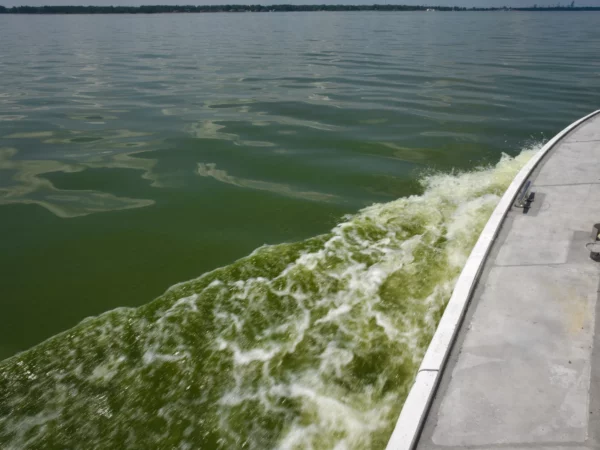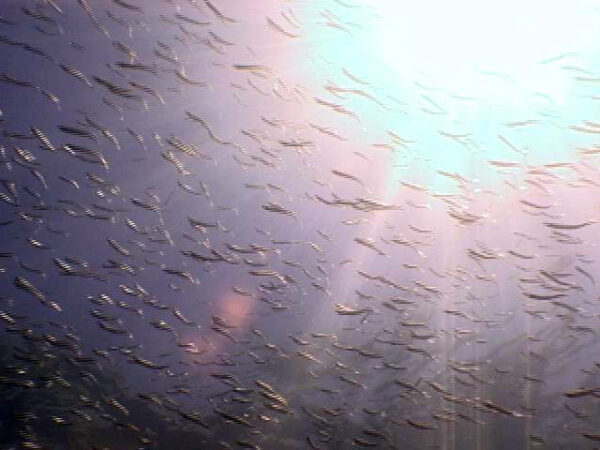
Great Lakes Moment is a monthly column written by Great Lakes Now Contributor John Hartig. Publishing the author’s views and assertions does not represent endorsement by Great Lakes Now or Detroit Public Television.
A business case is a document that outlines whether a project is worth undertaking. Just like a business case provides justification for a project, a new study commissioned by the Community Foundation for Southeast Michigan makes a compelling case for how The Great Lakes Way – an interconnected set of greenways and water trails stretching from southern Lake Huron through western Lake Erie – enriches quality of life and place for residents and visitors, sparks outdoor recreation and an outdoor recreation industry, and nurtures heritage and cultural tourism.
The Community Foundation for Southeast Michigan and many partners are knitting together 160 miles of greenways and 156 miles of water trails to become The Great Lakes Way. The vision behind this initiative is that all residents and visitors in southeast Michigan – people of all ages, backgrounds, ethnicities, abilities, and interests – are connected to these water resources, feel welcome on its trails, and share in the benefits and opportunities offered by access to water.
All the water trails or blueways are already complete and available for use. Preliminary mapping of greenways found that 64% are completed or partially complete, 25% are planned, and 11% remain to be completed. Through this initiative, the Community Foundation will be amplifying the important work of local trail organizations like the Detroit RiverWalk and the Joe Louis Greenway so that they don’t lose their identity. The foundation will also ensure they benefit from being part of a larger trail system. The intent is to build on existing assets and programs, ensure broad equity, and put The Great Lakes Way into the consciousness of residents and visitors.
Connections to Canada
Detroit and Windsor, Ontario are Great Lakes border cities on the Detroit River. Windsor has a long history of greenways dating back to the 1960s. In many respects, Windsor’s waterfront greenways were an inspiration to Detroit’s greenways that gained traction in the 1990s.
With the announcement of a new border crossing between Windsor and Detroit – the Gordie Howe International Bridge – greenway stakeholders came together to envision cross-border linkages and released a U.S.-Canada Greenways Vision Map in 2016 to connect emerging greenways. In response to this 2016 vision map, the Windsor-Detroit Bridge Authority committed to including a dedicated bicycle and pedestrian lane on the new Gordie Howe International Bridge, projected to be completed in 2024 or 2025.
Detroit’s greenways are part of Michigan’s Iron Belle Trail that extends more than 2,000 miles from Ironwood, Michigan, located at the far western tip of Michigan’s Upper Peninsula, to Belle Isle Park in Detroit, and are part of The Great Lakes Way. Windsor’s greenways connect to Essex County greenways and are part of the Great Lakes Waterfront Trail that stretches along the shores of Lake Ontario, Lake Erie, Lake St. Clair, Lake Huron, Lake Superior, and the St. Lawrence, Niagara, Detroit, St. Clair, and St. Marys Rivers – a total of 1,865 miles. The Great Lakes Waterfront Trail is also connected to the Trans Canada Trail that stretches from the Atlantic to the Pacific to the Arctic Oceans – nearly 15,000 miles. The Trans Canada Trail is the longest recreational, multi-use, trail network in the world.
When the new Gordie Howe International Bridge opens in 2024 or 2025, these four trail systems will be connected, providing binational outdoor recreational experiences unparalleled in North America. Cross-border trail experiences will include Windsor-Detroit Open Streets events (where certain streets are closed to automobile traffic during special celebrations), Underground Railroad tours, cultural and First Nations celebrations, environmental celebrations like World Migratory Bird Day and Earth Day, automobile history, rum-running history, and so much more.
Benefits of The Great Lakes Way
The Great Lakes Way is already helping improve quality of life, connect people to one another and the outdoors, celebrate our shared history and culture, improve health, and reap economic benefits. Such benefits are only increasing as people are spending more time outdoors walking, exercising, and recreating. This new economic impact study estimated the range of economic impact from discrete elements that make up The Great Lakes Way, including greenways, water trails, parks, unique natural areas, waterfront reclamation, connections to Canada, and historical and heritage attributes. All told the total estimated economic impact of these elements was approximately $3.75 to 5 billion annually.
These researchers also used alternative methods of measuring the impact of The Great Lakes Way and found that the outdoor recreation industry – the money spent equipping and participating in outdoor activity in the region – accounted for $1 to 2 billion every year. Other estimates place the value consumers place on the outdoor recreational opportunities afforded by The Great Lakes Way, which they can participate in for free, at more than $2 to 3 billion annually.
The healthcare cost savings realized from improved health afforded by more physical activity in The Great Lakes Way accounted for another $20 to 30 million every year. And the economic benefits of the enhanced quality of life and place of owning homes near The Great Lakes Way are already worth more than $1 billion in increased property values.
Unfortunately, these numbers can’t just be added up to get a total economic impact because they interact and overlap to a certain extent. The researchers did note that that impact is significant – in the billions of dollars – and will grow as the partners continue to invest in and complete this network of greenways and water trails.
The Great Lakes Way is a component of growing a Great Lakes blue economy that strives to foster sustainable use of the Great Lakes while improving human well-being and protecting the health of these inland seas. John Austin, director of the Michigan Economic Center and senior author of this economic impact report noted, “The Great Lakes Way is helping transform dirty historically industrial waterfronts into environmental and economic and community redevelopment assets and helping improve health for residents. It will also become a source of joy, connection, and inspiration for area residents and visitors for years to come.”
Next Steps
The Detroit RiverWalk, the Joe Louis Greenway, Downriver Linked Greenways, the Monroe County Cornerstone Trails Route, St. Clair County’s Bridge to Bay Trail, Macomb County’s Lake St. Clair Trail, and The Great Lakes Way are clearly helping change the perception of Metropolitan Detroit from that of a Rust Belt region to one that is actively engaged in sustainable redevelopment. The next steps for The Great Lakes Way include engaging communities and putting it into the consciousness of residents and visitors, building support and seeking additional partners, strengthening transboundary collaboration on trails, and exploring national and/or state trail designations to raise its profile and help ensure long-term sustainability.
For more information about The Great Lakes Way, visit: www.greatlakesway.org. For more information on economic benefits of The Great Lakes Way, visit: https://cfsem.org/initiative/greatlakesway/reports/.
John Hartig is a board member at the Detroit Riverfront Conservancy. He serves as a Visiting Scholar at the University of Windsor’s Great Lakes Institute for Environmental Research and has written numerous books and publications on the environment and the Great Lakes. Hartig also helped create the Detroit River International Wildlife Refuge, where he worked for 14 years as the refuge manager.
Catch more news at Great Lakes Now:
Great Lakes Moment: New trail connects people with secluded Detroit River wetlands
Great Lakes Moment: Solving the contaminated sediment remediation funding puzzle
Featured image: The Great Lakes Way vision map. (Photo Credit: Community Foundation for Southeast Michigan)




